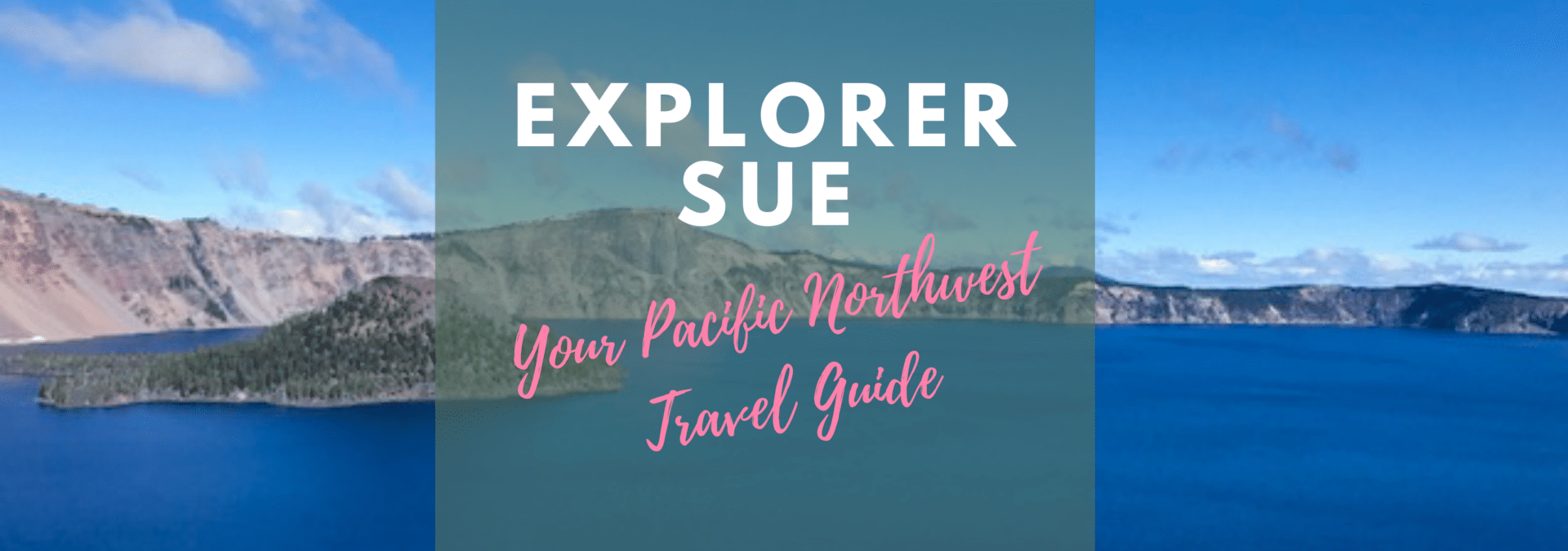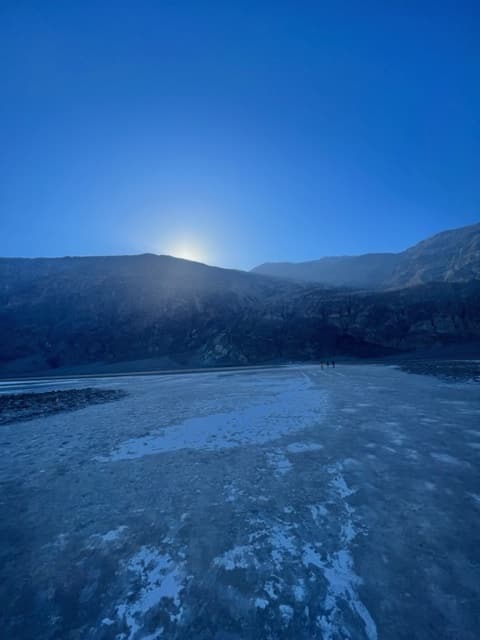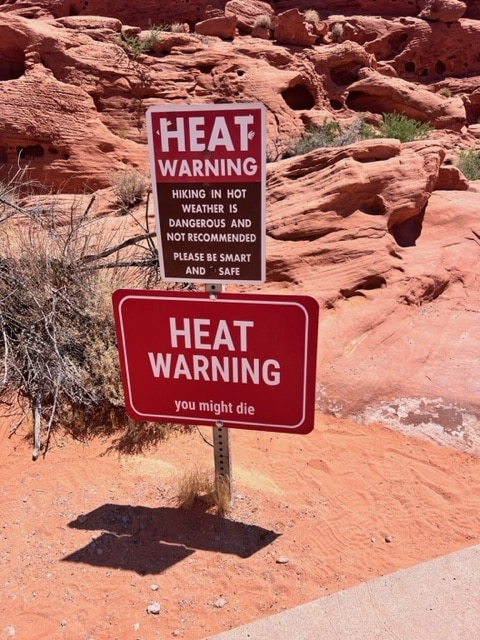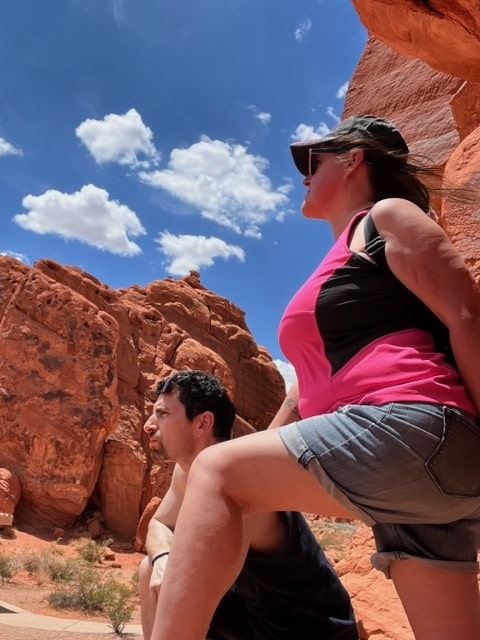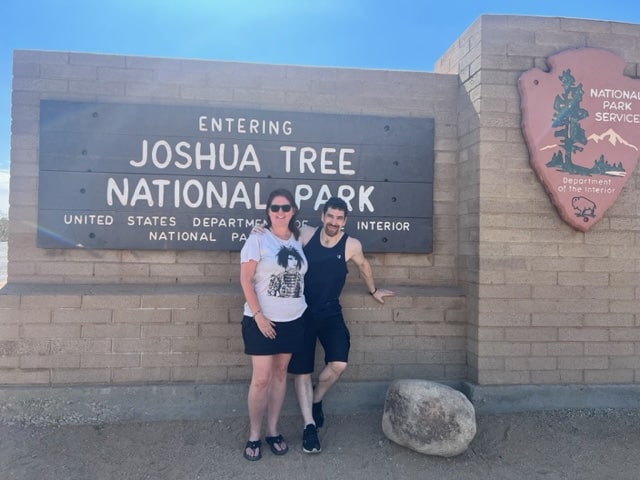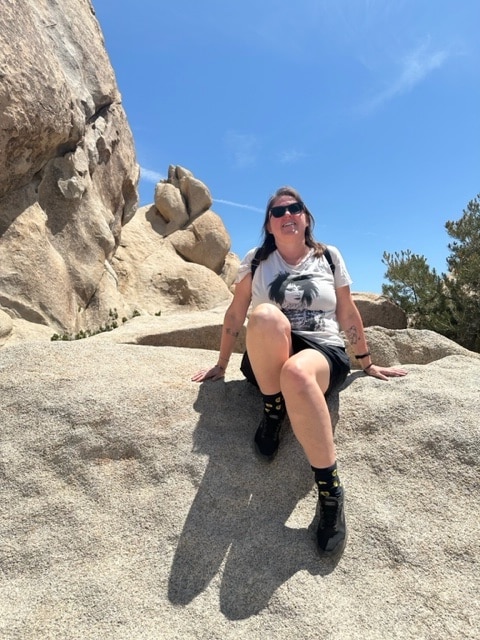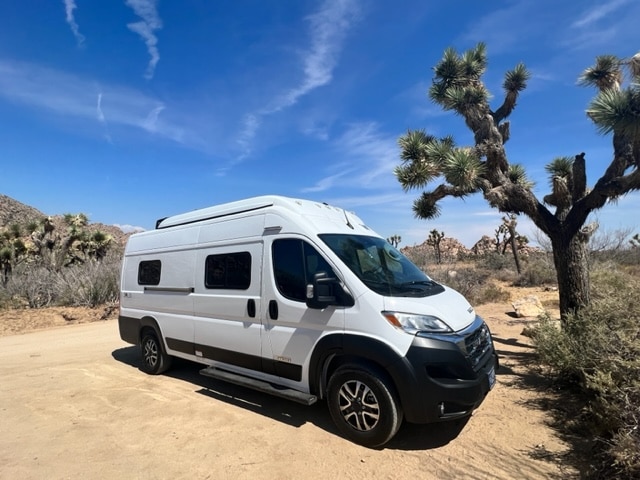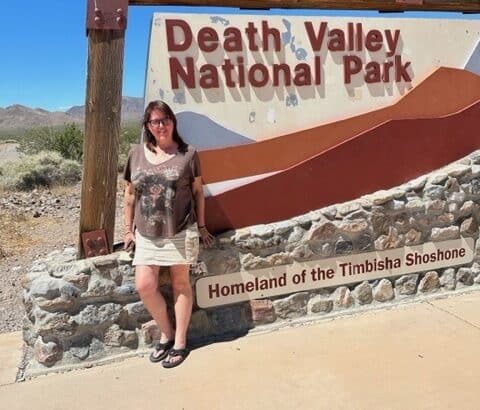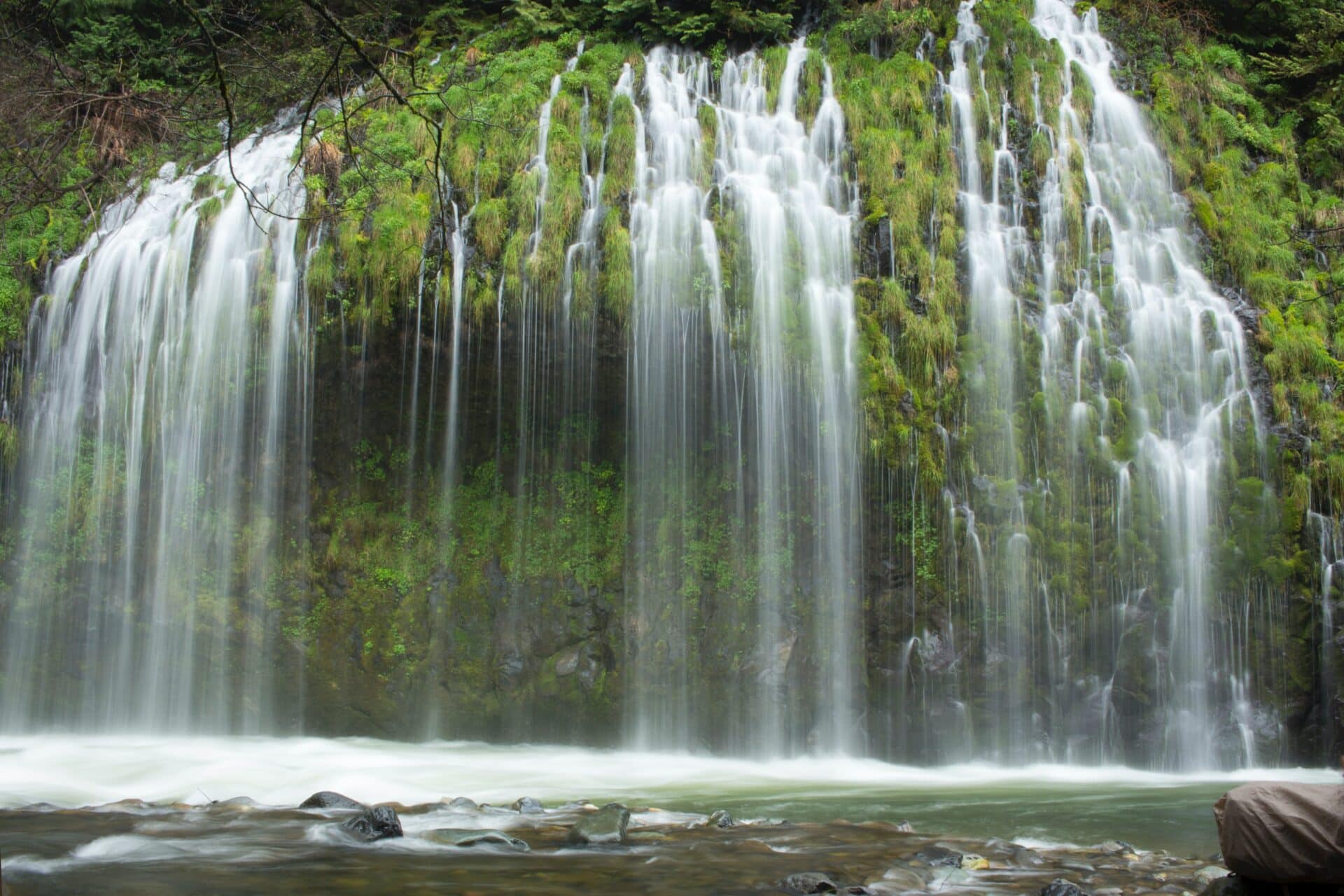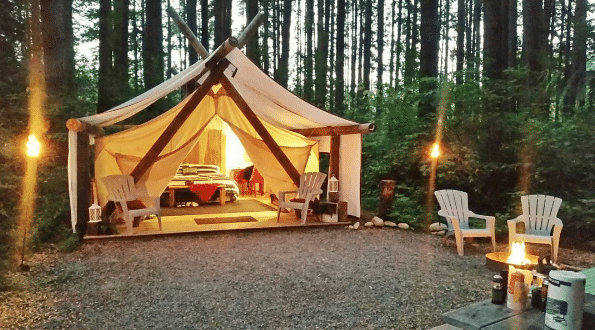I’ve written a fair amount of content about RV living but have never driven an RV. How crazy is that? Well, when one of my clients approached me with the idea of taking one of their smaller RVs on the road, I quite literally jumped at the chance.
Blacksford RV has offices in Bozeman, Montana and Las Vegas, Nevada (with more locations opening soon), so I was given a choice between the two. An RV road trip from Las Vegas seemed like a no-brainer for me – I had never been to Joshua Tree or Death Valley National Parks. They were both on my bucket list, and an easy drive from Sin City.
The only tiny caveat is that our trip was scheduled for mid-June. Not ideal for the California desert! But it was still early enough in the summer where temperatures were not expected to be insane, so we took a chance, and I’m glad we did.
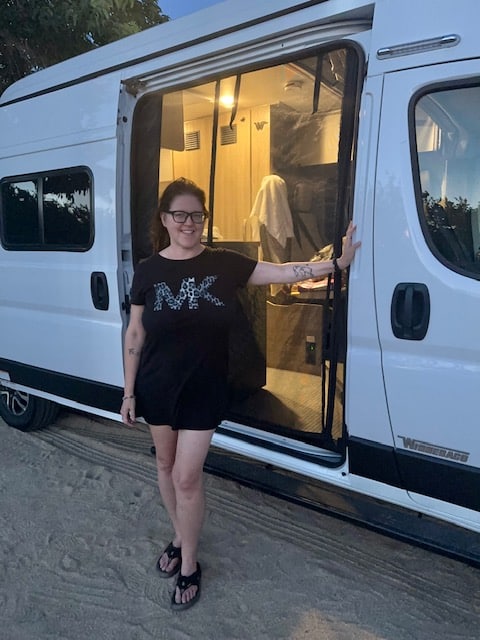
This is where high desert country meets otherworldly landscapes and a fascinating history. Where the Mojave and Colorado Deserts offer a unique glimpse into the diverse ecosystems that shape this land. From touring the second highest dam in the country to exploring the lowest point in the Western Hemisphere, here is the ultimate Nevada/Southern California road trip. Pick up your RV campervan in Las Vegas and get ready for a wild west adventure like no other.
Day 1: Las Vegas to Valley of Fire State Park, Lake Mead, and Hoover Dam
We started our adventure in Las Vegas. With a view to staying far away from The Strip (tired ol’ bag of bones, she is) we looked eastbound to the amazing landscapes of Valley of Fire State Park, Lake Mead, and Hoover Dam. Because the Nevada desert is way more than the neon lights and overpriced decadence the Las Vegas Strip.
Ever seen the movie The Martian starring Matt Damon? After that movie came out, there was a lot of talk about actually transporting people to Mars to begin a new civilization. But who needs Mars when you have Valley of Fire State Park? The landscape here is just as amazing, if not more so. Putting aside the fantastic colors of the striations, the rock formation alone give this State Park an otherworldly ambiance that draws you in and demands exploration.
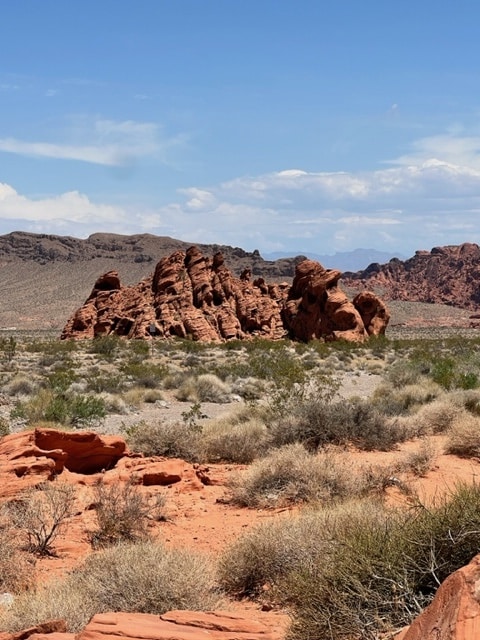
Love climbing on rocks? This park is for you. Like winding roads where around every curve there’s an amazing vista? This park is definitely for you. Love learning about geological history? Yeah, you should absolutely come here.
Valley of Fire State Park Hiking
As you might expect, summertime is NOT the most ideal time to visit. It is too hot and takes away the joy of the experience when you are baking in the heat. If you must come during summer, be prepared to come at the butt-crack of dawn and get your hiking in the first 2-3 hours after sunrise. The winter months are the best time, as while it is a bit cooler, the temperatures provide the perfect recipe for meaningful hikes.
The early morning or hours just before sunset are the best time to catch wildlife. We were lucky enough to see quite a large lizard scurrying across the rocks, stopping long enough to check us out and pose for a couple of photos.
White Dome Loop – located at the north of the park, this is an easy hike. It is about 3 miles total, so plan for about an hour if you want to do the whole thing. The best time to hike is in the morning, although sunset is nice too for great photos!
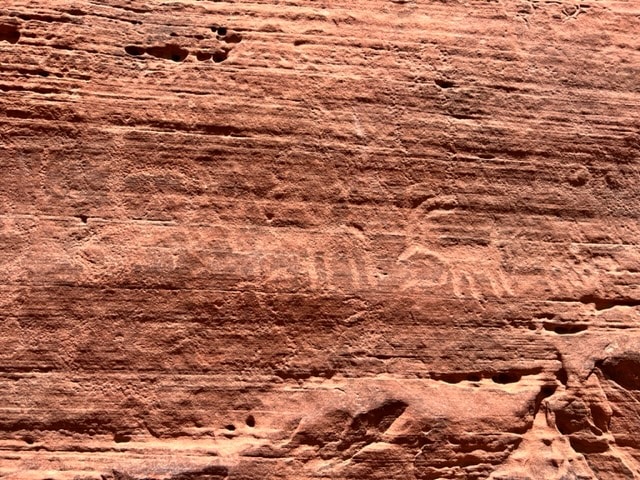
Valley of Fire State Park is Nevada’s oldest state park and covers an expansive area, featuring amazing red sandstone formations and petroglyphs that draw visitors year-round. If visiting during summer months, take extra precautions as temperatures can become extremely high in this region. Valley of Fire is just over an hour’s drive northeast of Vegas and provides the ideal escape from Vegas’ touristy Strip.
Lake Mead and Hoover Dam
Heading south from Valley of Fire, Lake Mead National Recreation Area is Nevada’s cleanest lake – an impressive combination of desert scenery and crystal blue waters that offers a relaxing contrast to Las Vegas heat.
Lakeshore Road runs along the shoreline of the lake and offers stunning views. Spring visitors may see wildflowers; summer can be enjoyable as temperatures remain manageable (though you will want to stay hydrated), while winter weather requires cold-weather gear such as hats, gloves, and scarves for optimal enjoyment. As you drive from Valley of Fire south along the western edge of Lake Mead, several swimming, fishing, and boating spots are available.
If you’re fascinated with engineering marvels, Hoover Dam should not be missed. It is situated due south of Valley of Fire State Park and all three spots can be visited in a day. History buffs and architecture enthusiasts will find Hoover Dam particularly compelling, from various observation vantage points or by taking a tour through this National Civil Engineering Landmark. After exploring nearby Historic Downtown Boulder City, stop in at its popular Route 66 museum or grab some refreshments at Hackberry General Store.
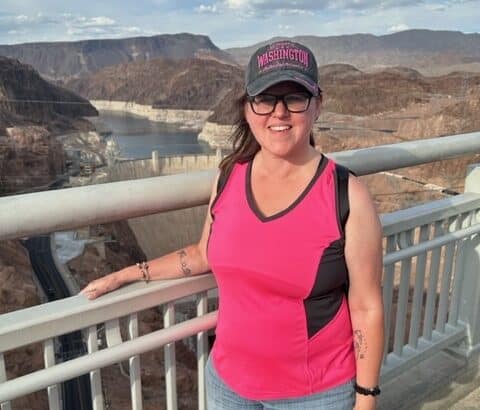
RV Camping near Las Vegas, NV
- Las Vegas RV Resort. Located on the east side of town and convenient to Valley of Fire State Park, this is a full-service, adults-only RV park with an outdoor pool, gym, and several other amenities to make your stay comfortable.
- Valley of Fire State Park. The Park has two campgrounds which are equipped with shaded tables, grills, water, restrooms and showers, and a dump station. Campsites inside the park are on a first-come, first-served basis.
Day 2: Las Vegas to Joshua Tree
Head out of Vegas on Interstate 15 going southwest, then take a series of two-lane roads passing through the Mojave National Preserve, before hooking onto CA-62 to arrive in the town of Joshua Tree. As the gateway to Joshua Tree National Park, here you can visit the park’s official Visitor’s Center, browse the gift shop, tour the Crochet Museum, and eat at the Joshua Tree Saloon. Twenty-nine Palms is a town located on the northern edge of the park and is a great place to stock up on groceries. Don’t miss the nearby Twenty-nine Palms trail, which is actually located inside Joshua Tree National Park, and a great way to start your exploration.
Best Campground in Joshua Tree
- Joshua Tree RV & Campground. A private campground featuring 75 full- and partial-hookup sites and can accommodate RVs of any size. There is WiFi and cell phone reception, as well as toilets and showers.
- Joshua Tree Lake RV & Campground. A family-owned, private campground offering RV hookups, water, and dump station. Showers and toilets are available. Dry camping (boondocking) is also available. Fish at the nearby lake!
Day 3: Joshua Tree National Park
Joshua Tree National Park is a favorite among outdoor adventurers, offering plenty of natural attractions to discover. From desert landscapes with cougars and prairie dogs to rock climbing and rappelling at Mouse’s Tank Trail, Joshua Tree is a hiking and rock-climbing mecca! Major highlights include Skull Rock, the Hall of Horrors Trail, and the Cholla Cactus Garden.
Joshua Tree is actually comprised of two different desert ecosystems – the Mojave and the Colorado. This is a land sculpted by strong winds and occasional torrents of rain, with a fascinating variety of plants and wildlife. Least of which is the intriguing Joshua Tree, a variety of the yucca plant.
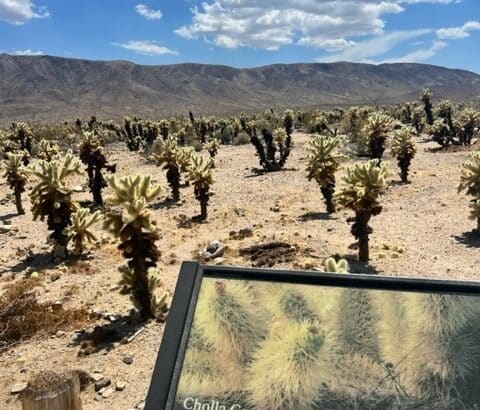
Best Campgrounds in Joshua Tree
- Indian Cove Campground is just off Highway 62 on the north side of Wonderland of Rocks. There are vault toilets but no hookups or water at this campground, although water is available at the small ranger site two miles north. They accept RVs up to 35 feet.
- Black Rock Campground is located at the northwest corner of the park, and each site has a picnic table and fire ring with water and restrooms nearby, as well as a dump station. It accepts RVs up to 30 feet, and sites are back-in only.
Visiting Joshua Tree National Park
Joshua Tree National Park has a rich history that dates back thousands of years. The land was originally inhabited by Native American tribes, including the Cahuilla, Chemehuevi, and Serrano people. These tribes relied on the desert ecosystem for survival, using the plant and animal resources for food, clothing, and shelter.
In the 19th century, European settlers began to explore the area and establish ranches. Miners also arrived in search of gold, silver, and other minerals. The park gets its name from the Joshua tree, which was named by Mormon pioneers who believed the tree’s unique shape resembled the biblical figure Joshua reaching towards the heavens.
In 1936, President Franklin D. Roosevelt designated Joshua Tree as a National Monument to protect its unique desert environment. It was later upgraded to National Park status in 1994.
Things to Do in Joshua Tree National Park
Joshua Tree is famous for world-class rock climbing, but the city offers plenty of other activities as well. If you’re in search of a short trek, check out Cap Rock Nature Trail which will lead you past large boulders and distinctive rock formations.
Rock climbing in Joshua Tree is a must for outdoor lovers and adventurers. The park’s bumpy monzogranite rocks and cliffs offer numerous trad, sport, and winter climbing routes for novice climbers and experts alike – offering incredible challenges to experts as well.
One of the main attractions is Toe Jam, a 20m trad route on Old Woman with gentle laybacks and an exciting flaring crack for an exhilarating finish. Predator (5.13), another top attraction that’s often included on anyone’s tick list, offers challenging climbs with multiple cruxes.
For beginners, consider joining an organized tour with an experienced rock climber to be shown proper techniques. When dressing appropriately for climbing, bring plenty of water as desert temperatures may fluctuate throughout the day and clothes that won’t mind getting dirty are necessary as layers provide insulation from extreme temperature changes.
Cholla Cactus Garden
Joshua Tree National Park may be best-known for its famous Joshua trees, but this incredible desert park also contains an incredible array of other plant life. Cholla Cactus Garden is an especially popular attraction within Joshua Tree NP for those seeking an easy nature trail that gives a close-up glimpse of these remarkable plants – just be careful not to bring your pup along as those spikey cacti will stick themselves firmly onto anything they come into contact with (including skin!).
Pinto Basin Road connects Belle and White Tank Campgrounds and this short trail, measuring just half-a-mile in a loop, passes through 10 acres of desert dominated by unique Teddy Bear Cacti (Teddy Bear Cholla Cacti).
Cacti Garden Joshua Tree is an exceptional site to visit any time of the year but especially impressive during cholla cactus bloom. A great stop while driving around Joshua Tree and worth at least 30 minutes’ exploration!
Hiking in Joshua Tree National Park
Among the Best Hikes in Joshua Tree, Barker Dam stands as an oasis of water in Joshua Tree National Park’s otherwise dry desert landscape, offering easy hiking trails through monzogranite boulders and its namesake Joshua trees to discover desert wildlife such as bighorn sheep (with sunrise being an ideal viewing time). This easy loop hike loop also makes a great place for bird-watching opportunities!
This trail features some prickly pear cacti clusters that may sting if any part of it comes into contact with clothing or footwear. Please remain on the marked path as straying off-trail can damage fragile desert landscapes that take years to heal themselves.
This trail is ideal for families, rock climbers, wildlife enthusiasts, historians and archaeologists interested in history and archaeology as it offers scenic walks of 30 to 60 minutes duration – an extra special treat when Joshua Tree Dam is full!
Joshua Tree Hiking in Keys View Overlook
Geology Road offers one of the best experiences at Joshua Tree National Park: an easy drive along its northern perimeter that features scenic stops to admire its rock formations and desert vegetation that have made Joshua Tree famous.
Along this drive are various stops where you can get out on two feet and admire Joshua Tree’s rock formations and desert vegetation that make this park so breathtakingly beautiful; here you’ll also find its namesake Joshua trees, as well as numerous species of cacti, yuccas, ferns and many types of ocotillos featuring bright red flower sprays at their tips; yellow, purple and red wildflowers can decorate its ground surfaces!
Keys View Overlook is the focal point of this road, showcasing Joshua Tree’s signature rock formations – in particular “Skull Rock.” Additionally, Arch Rock offers an easy half mile loop hike.
Hidden Valley Trail Joshua Tree
Hiking one of Joshua Tree National Park’s scenic trails is one of the top things to do, and Hidden Valley Trail is an excellent option for both novice and veteran hikers alike. The short, mile-long loop offers great scenery – including towering boulders and sandy desert floors – at every step.
Skull Rock, an intriguing rock formation with two sunken eyes, marks the starting point for one of the park’s most popular hikes. It curves around a low divide with views of Behind the Rocks Wilderness Study Area to the east.
If you have time to explore Joshua Tree National Park, adding this hike and other trails is certainly worthwhile. Additionally, visit Lone Pine for Museum of Western Film History which covers filming history in the region; driving Geology Tour Road or Ryan Mountain are other rewarding experiences that should not be missed!
Ryan Mountain
Ryan Mountain is one of the most beloved trails in Joshua Tree National Park, offering an easy yet moderately challenging hike along its circular summit in the center of the park and offering spectacular panoramic views.
Joshua Tree National Park offers some incredible spots for photography enthusiasts and people looking for breathtaking scenic vistas to take photos in. This hike is particularly popular during peak hours and can become quite busy.
To avoid crowds, we advise doing this hike early morning or after sunset in order to maximize your experience. If you’re into rock climbing, hiring a guide such as Cliffhanger Adventure Guides can also make the experience truly remarkable; these providers specialize in tailored experiences for people of all abilities.
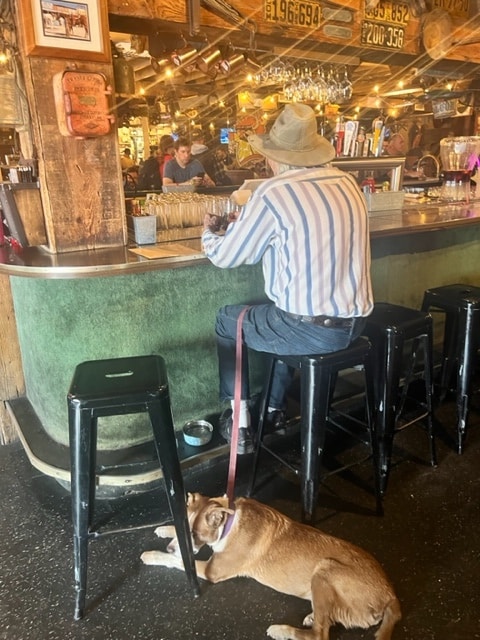
Things to Do in Joshua Tree Town
Though many come to Joshua Tree for its National Park, it’s important to remember this destination is also a real town with people living here all year. When visiting, be respectful of everyone you encounter – particularly locals; while they might not love all of the tourists visiting annually, they still show kindness when greeting visitors with open arms.
Joshua Tree offers visitors one of the more unusual experiences: the world-famous Crochet Museum. Originally the home of Shari Elf’s crochet obsession, the museum now features various crochet pieces as well as art installations.
Not far from there is Krblin Jihn Kabin, and art project that is arguably the strangest thing to do in town. Artist Eames Demetrios has turned this homesteading cabin into a true project. You just have to come see to believe. The cabin is free and open to the public.
Joshua Tree Saloon is THE place to grab a great meal in a unique atmosphere. Reminiscent of an old desert saloon, they have amazing comfort food and vegetarian options.
Day 4: Joshua Tree to Death Valley
Leaving Joshua Tree, head north on CA-247, then take US-395 N to Trona Rd. Be sure to check the road conditions, as Trona Road has been known to be closed occasionally due to flooding. An alternative would be to get on CA-178 going west, then hook onto US-395 N, then take CA-190 east into. Here you’ll enjoy spectacular views of Death Valley as you descend into the park. You’ll no doubt want to stop at various points along the way to take in the grandest scenery imaginable.
Death Valley National Park Camping
- Panamint Springs Resort is the best campground in Death Valley and is located on the western edge of Death Valley National Park. It is a full-service campground, with a general store, gas station, and a bar/restaurant. They have several back-in RV sites, as well as rustic cabins and glamping tents. Showers and restrooms are steps away.
- Furnace Creek Campground is located in the middle of the park and is convenient to several top Death Valley attractions. Reservations are accepted from October 15 – April 15, and are first-come, first-served the rest of the year. Note that there are only 18 RV sites with full hookups and a dump station. No other amenities are offered, although there is a full-service hotel and resort right next door. A true oasis in the desert!
Day 5: Death Valley National Park
Death Valley National Park lies at the heart of the Mojave Desert and features breathtaking sand dunes, mountainous areas, and salt flats that seem out-of-this-world. It boasts some of the best historic sites from both the railroading and gold mining industries. This is an International Dark Sky Park, so be sure to spend at least one evening exploring the night sky!
Death Valley offers numerous activities, such as hiking, exploring Rhyolite ghost town ruins, and taking scenic drives around Artist’s Palette. Check out Badwater Basin salt flats; this is the lowest point in North America at 282 feet below sea level! Don’t forget Zabriskie Point for one of the most surreal landscapes in the park and the best spot for enjoying an epic sunrise.
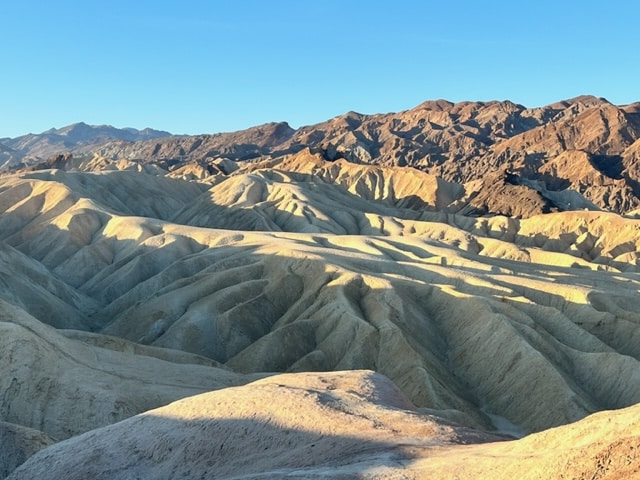
Guide to Death Valley National Park
Death Valley National Park is located in eastern California, near the Nevada border. It is known for its extreme desert conditions and breathtaking scenic views. The history of the park dates back thousands of years, with evidence of Native American occupation dating as far back as 9,000 years ago.
The area was first explored by European settlers in the mid-1800s during the California Gold Rush. However, it was not until the late 19th century that the area gained more attention and recognition. In the 1880s, a borax mining boom took place in Death Valley, attracting settlers and entrepreneurs looking to profit from the valuable mineral.
In 1933, Death Valley received the wonderful designation of a national monument by President Herbert Hoover. It wasn’t until 1994 that it was officially designated as a national park, expanding its protection and recognition.
Today, Death Valley National Park covers approximately 3.4 million acres, making it the largest national park in the contiguous United States. Visitors can explore various geological formations, including the iconic Badwater Basin, which is the lowest point in North America, sitting at 282 feet below sea level.
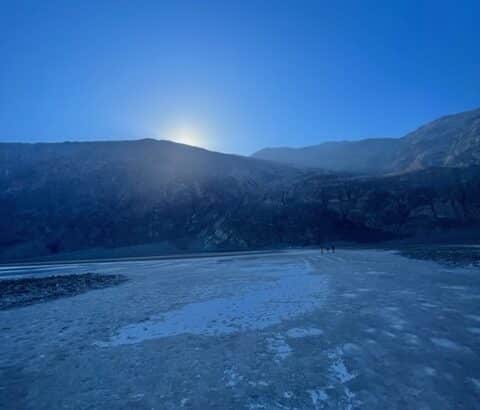
Best Time of Year to Visit Death Valley
Death Valley should be visited between October and mid-May when temperatures are cooler and crowds are lower, as well as when its unique wildflower displays are at their most spectacular.
Summer temperatures can be dangerously hot and uncomfortably uncomfortable for anyone not used to extreme heat. When visiting during this season, it’s recommended that visitors take frequent stops for water consumption and reduce sun exposure as much as possible.
Death Valley in April is a great time of year as its wildflowers put on an incredible show and the mountaintops are blanketed in snow. Unfortunately, this is also one of the busiest for visitors, so if this is when you plan on coming, make sure you secure accommodations and campsites well in advance!
Best Death Valley Hikes
Death Valley National Park offers some excellent hikes that are less traveled, providing an authentic experience without distractions. An example is Darwin Falls Trail on its western edge which leads to a natural bridge and offers the chance to explore side canyons.
Badwater Basin, North America’s lowest point at 282 feet below sea level and filled with Sodium Chloride (commonly referred to as table salt), offers another fantastic trail experience. This flat path makes access easy, though you may need to traverse some water-polished canyon walls along the way.
Ubehebe Craters Trail is one of the easiest trails in Death Valley and offers stunning views of all its major landmarks – Badwater Basin being miles away! For anyone wanting the maximum enjoyment from their hike in Death Valley, this trail should be prioritized.
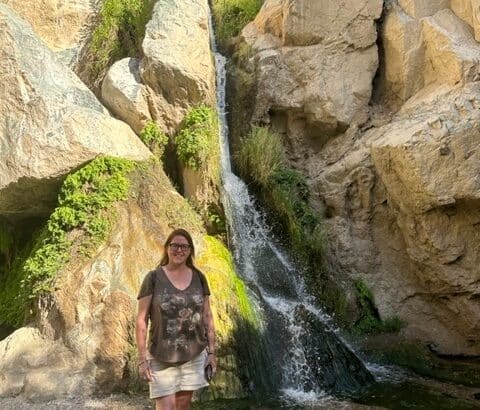
Things to Do in Death Valley
Death Valley National Park offers numerous captivating highlights that make it worth your while to visit, such as Badwater Basin (North America’s lowest point), Artist’s Palette with colorful mountains, or twisting canyons and rolling sand dunes.
Many visitors to Death Valley park prefer touring it by vehicle, but walking can provide unique perspectives of its natural wonders and sights, including Badwater Basin salt flats (282 feet below sea level), Twenty Mule Team Canyon, Zabriskie Point and Dantes View.
Popular attractions at Death Valley National Park include the Furnace Creek Visitor Center and museum, Salt Creek Trail with its pools of water where you can spot Death Valley pupfish between November and May, Rhyolite ghost town and more. When camping or hiking through this national park, remember the seven principles of Leave No Trace for optimal experience.
Best Tips and Tricks for Visiting Death Valley
- Start your adventure at Furnace Creek Visitor Center, where you can gain knowledge of this spectacular national park through fascinating exhibits and an orientation film.
- Take Artists Drive for breathtaking views of sedimentary and volcanic rock formations; climb, slide down and wrestle on its sand dunes – perfect for climbing, sliding down or wrestling!
- Sunset photos at this park are spectacular; just be sure that your rental car insurance covers gravel roads before heading out!
Day 6: California to Nevada
Following US-190 east out of Death Valley, hook onto US-374 towards the town of Beatty, then take US-95 south which will bring you into the Las Vegas area. Red Rock Canyon National Conservation Area is on the outer western limits of Vegas near the suburb of Summerlin.
While on US-95, stop by the Area 51 Alien Center. Here you can shop for official Area 51 merchandise and visit the museum for an inside look into this legendary classified United States Air Force facility. Hear stories from various personnel over the decades to get a personal view of what it’s like to be part of such a secretive operation. Declassified documents and other artifacts are on view.
RV Camping in Red Rock Canyon National Conservation Area
- Red Rock Canyon Campground. Located inside the stunning conservation area about two miles east of the Visitor Center on West Charleston Blvd (State Route 159), note that the campground is closed during the warmer months between Memorial Day and September 1st. At all other times of the year, reservations can be made at recreation.gov. Vault toilets are available, but there are no RV hookups, water, showers, or dump station.
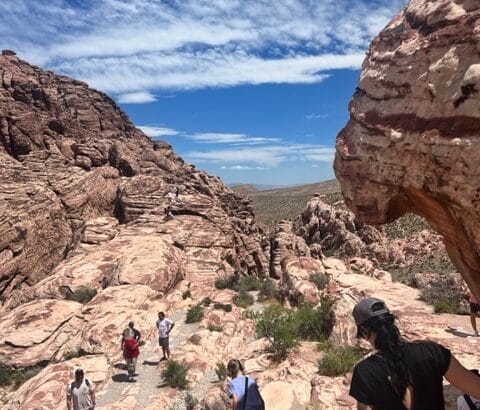
Day 7: Red Rock Canyon National Conservation Area to Las Vegas
This nationally recognized conservation area boasts a unique Mojave Desert environment with stunning vistas of red rock formations formed over millennia. Visitors enjoy hiking, biking, rock climbing, and scenic drives. Plan for 2-4 hours in the park. End your fabulous road trip by heading west back into Las Vegas and dropping off your Blacksford RV back at our Vegas location, conveniently located just south of the Harry Reid International Airport.
Tips & Information When Visiting the Nevada and Southern California Desert
- This is desert country after all, so the high season is during the late fall through the winter months. Late spring through early fall sees extremely high temps. Always important is water, sunscreen, and hats/protective clothing, no matter what time of year you visit.
- During the warmer months, be sure to visit attractions when temperatures are at their lowest; do your hiking/sightseeing very early in the morning, or when the sun is going down for epic night views!
- Always check road conditions and weather forecasts before heading out for the day. Various weather conditions arise and roads/attractions can be susceptible to closure.
- When possible, book campgrounds in advance, especially during the peak tourist season of October through April.
- Allow for flexibility in any itinerary for unexpected stops or detours. You never know what you might find!
